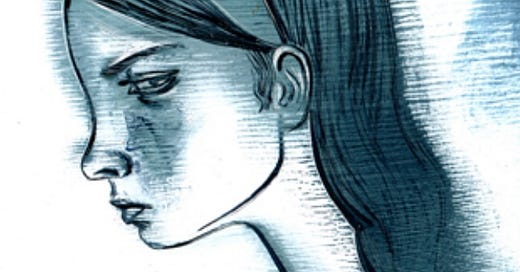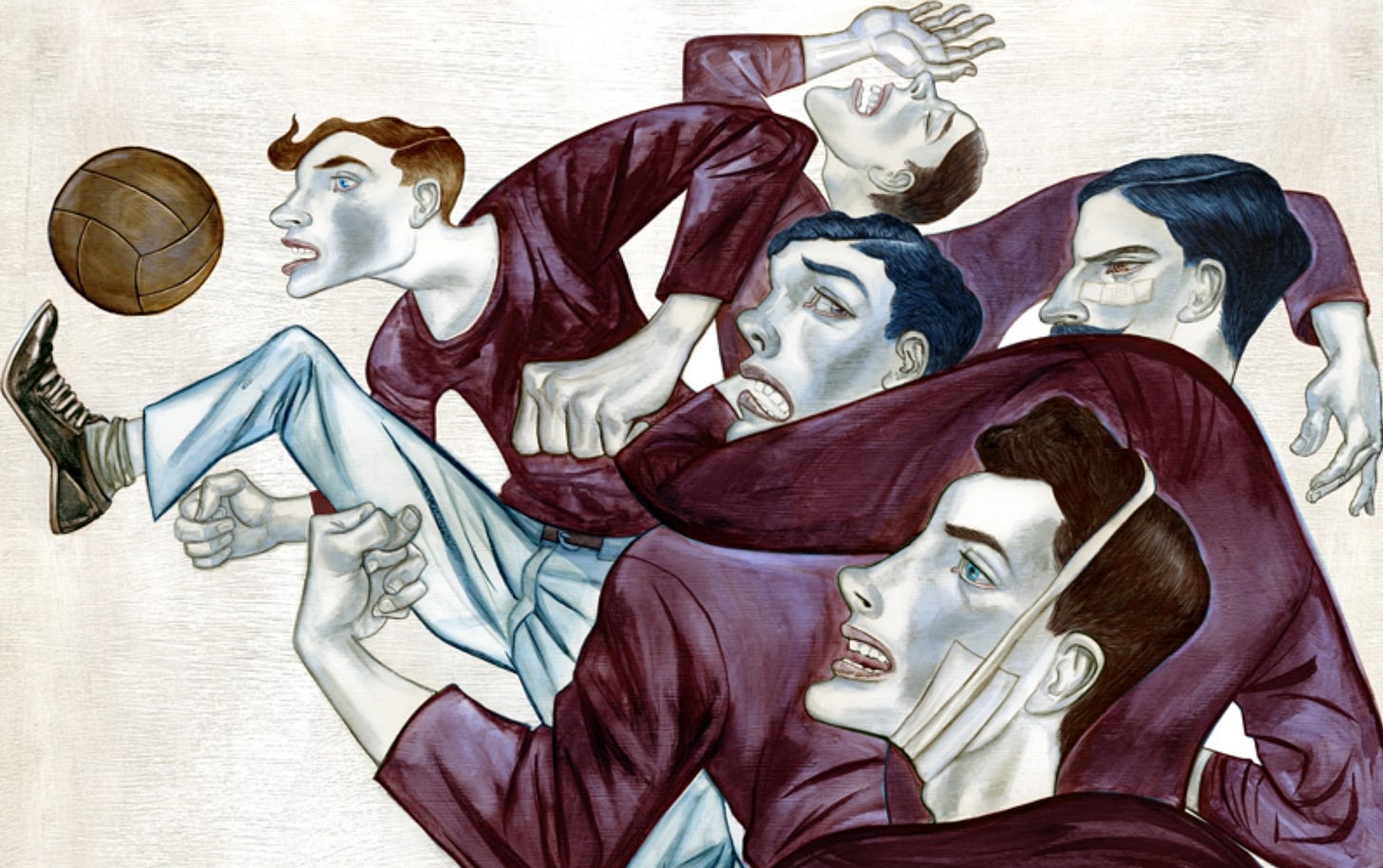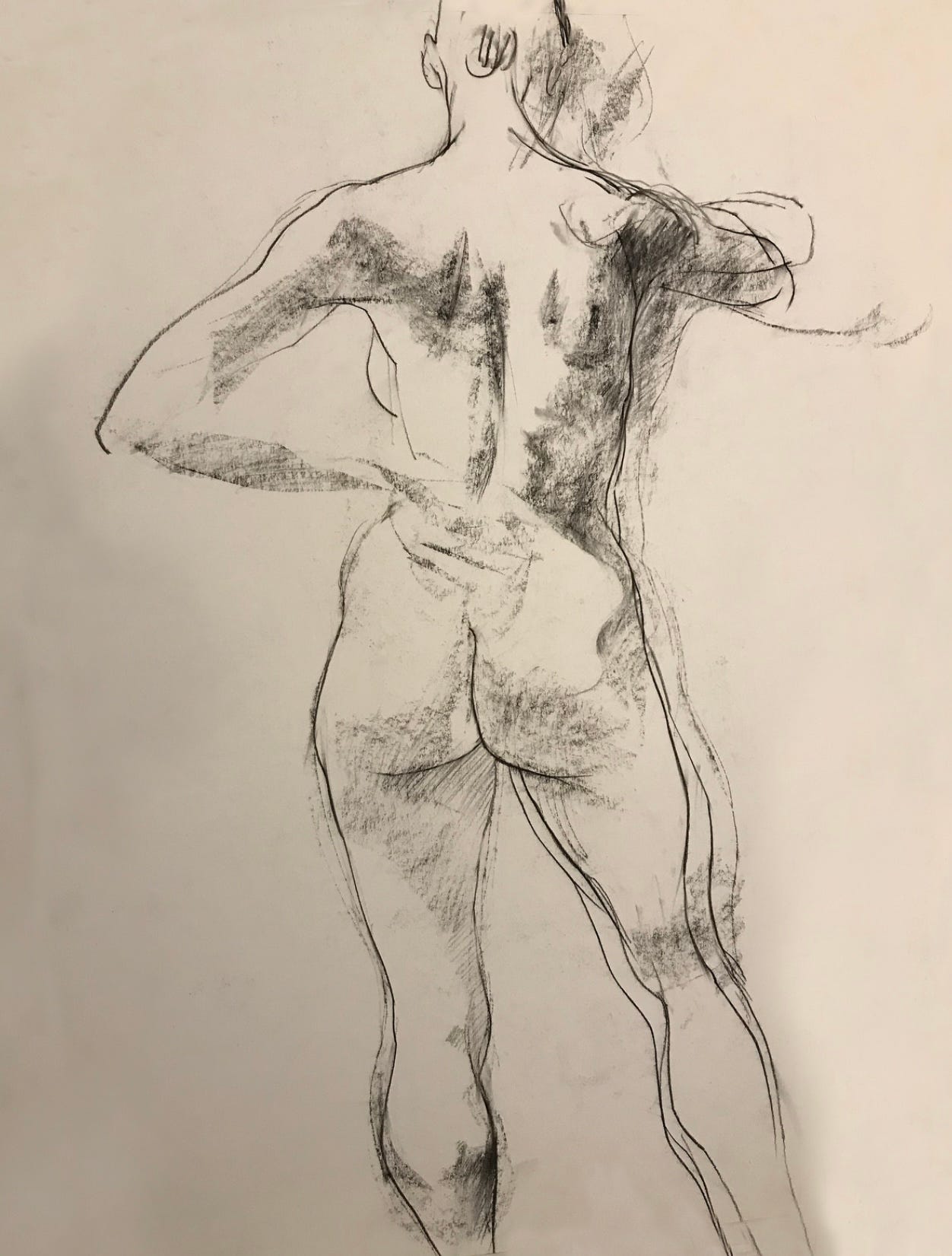Back to the drawing board, or actually the studio. My detour into brain science last week is likely my way of trying to make sense of our culture right now, and derive some small comfort from a theory that cleans up the mess in our heads. The best conclusions I can draw are with my hands on paper, so I’m going to stick to that. We have no lack of talking heads consuming too much oxygen. So, how about a respite and join me in the studio and a challenging problem—-not doing something to get better at doing it.
What is one thing that gives you great comfort? What if that one thing was not available to you? How would you react? That is the task in the studio this week. I am removing the one thing that so many of my students (me too) wrap their hands around and refuse to let go—the use of line. Drawing lines are forbidden to start, develop or complete a drawing. This is the Illustration student’s lifeline—-literally for most of them, especially today. They have been raised on anime and cartoons that are wired in, dialed down edge containers. I’m not a monster. I’m not tossing them into the ocean to fend for themselves, I offer first a lifesaver— the medium or drawing tool —-conté (compressed carbon and clay sticks) and a swimming lesson, how to hold the stick to use only the edge. No pencils, pens, or markers—nothing with a point and this is critical because tools with points are linked to the hand gestures we learn to train our brains to write, detail, and contour draw. Hard to avoid something that is hardwired into the tool.
How we physically engage with the world leads our thoughts. Learning a new skill or task is important for helping us attend to what we are doing—-be present and conscious. Changing the input of the body brain connection is a critical way to learn and to exercise these incredibly important parallel systems. The repetitive strain injuries of 20 year old art students—-Apple Pencil pain—should be telling us we are doing something wrong. The irony of filling the space of a small iPad screen being more lethal than painting a mural—our bodies are made to act in the world, not to be pinched and squeezed into 2732 pixels by 2048 pixels.
The resistance to the drawing exercise is interesting, it takes two forms. The first, some of the students cheat because stepping off the well worn path is risky. What they are looking for in a drawing is not being satisfied in this exercise and the results are not offering them the comfort that their habitual approach reliably gives them. So much of their visual education in high school was pantomime and useless, and they survived that by mindlessly doing what was asked, or slavishly copying the surface of photographs. They weren’t asked to attend to how they were making a drawing, they were rewarded for progress rather than process. The second group, ignored the approach, but fashioned their drawings to end up looking like what I am asking them to do, they mistake the destination as the journey. The entire point of the exercise is lost to them in their simulated answer. It doesn’t take long for everyone to be following the exercise, I can be very persuasive.
It’s strange that the most important relationship they will ever be in —-as a visual person—-will be the figure/ground relationship and they have little understanding of this dynamic. It’s understandable I guess, because our world has become purposely more visually incoherent, all the better to keep us consuming and cheaply offering up our attention. My models this week were both brilliant, inventive, and very good at centring student attention on them. This made it harder for the students as their visual besty—line—was not available. The exercise is focusing your attention on a vital visual relationship, but having wildly creative naked people front and centre makes this a challenging task. The problem was mistaking the model as sculpture rather than a sculptor crafting the space surrounding them.
There is a reason I am asking the students to let go of the thing they love the most, because I want them to see the underlying pattern that is the real magic of what they are drawing and experiencing. The pop, crackle, fizz of visual culture is all noise, a vast torrent that we are dragged into. The velocity and intensity of this surging current is constantly moving, changing, and demanding our attention. We are unmoored and blinded by the vivid reflections and refraction on the vast surface of this stream.
Finding your footing, being able to move to the edge of the stream and to see it’s relentless, mindless movement— happens when you can look under the surface, escape the velocity, and see the pattern you are meant to pay attention to. Whatever can get you to the shore— tether you to the world, and help to attend to what can’t be seen when you are lost in the turbulence, is the role of the studio. This week we chose the warm blanket of line that wraps itself around our consciousness, to leave it behind, not to discard it, but to find new meaning and purpose as we slip our arms back into it’s embrace, before we step again into the river.







